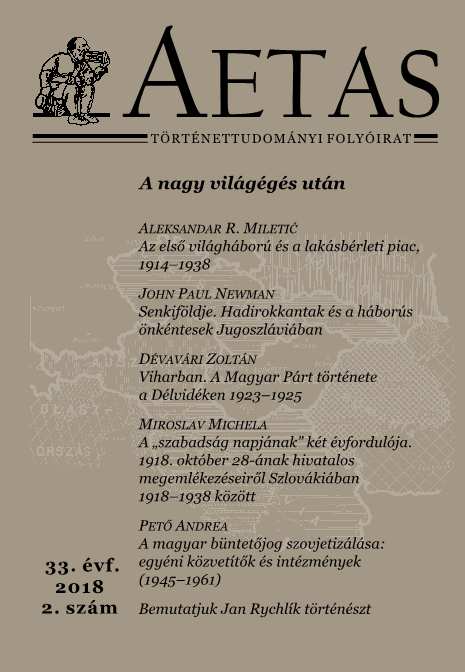Az első világháború és a lakásbérleti piac, 1914–1938.
WWI and Housing Rental Market, 1914-1938.
Southeast- and East-Central European Processes in a Broader European Context
Author(s): Aleksandar R. MiletićSubject(s): Interwar Period (1920 - 1939)
Published by: AETAS Könyv- és Lapkiadó Egyesület
Summary/Abstract: The universal tenant-protection schemes and rent control system (RCS) were born out of the huge turmoil triggered by World War I. By the end of the war, the trend towards an ever more elaborated RCS was gaining firm ground; throughout 1920s it was the prevailing model of housing policy on the European continent. The four countries under study followed the above mentioned European trends of increasing state intervention in the housing market, and furthermore, their authorities, representing distinctive Southeast- and East-Central European patterns of administrative modus operandi, applied some of the most intensive forms of housing policies in Europe during the first postwar decade. In the first place, this refers to the practice of requisitioning housing units, which was maintained in these countries, even after it was abolished by the most interventionist Central European countries. According to the innovative 6-level developmental typology, this proved to be the highest level of state intervention in the housing market in interwar Europe (5 out of maximum 6), if the Bolshevik practices (6 out of 6) are to be excluded from the comparison. On the other hand, Southeast European countries managed to effectively return to prewar liberal practices, while this was not accomplished by the most liberal Western European countries. From this perspective, East-Central and Southeast European countries represent confronted patterns of the most liberal and the most interventionist housing policies in Europe in the period under review.
Journal: AETAS - Történettudományi folyóirat
- Issue Year: 2018
- Issue No: 2
- Page Range: 5-21
- Page Count: 17
- Language: Hungarian

